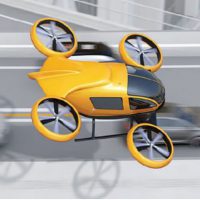Buckle Up – Ridesharing’s About to Get Interesting

Ridesharing’s come a long way. During the economic recession of World War I, as Americans looked for ways to save on fuel, car owners began offering up empty seats in their cars to fellow commuters. These cars were called “jitneys” and the term became synonymous with rideshares that competed with taxis. Later, when Richard Nixon sought to reduce petroleum consumption during the 1970s energy crisis, he signed the Emergency Highway Conservation Act, which included provisions for funding rideshare initiatives. Carpoolers eventually got their own lanes, preferred parking spaces and even their own place in the zeitgeist.
For a while, carpools seemed like the future of commuter travel. But with the advent of apps, ridesharing companies quickly moved into the passing lane. Now Uber is both a company name and a verb describing how we get from points A to B. But if the past century has taught us anything, it’s that mobility doesn’t stand still.
In July, Uber introduced what may be the future of ridesharing. With Uber Copter, the company now offers rush-hour helicopter rides between lower Manhattan and JFK International Airport. Users in this area can find a “Copter” option on their devices and pay roughly $200 for the one-way, 8-minute commute. Private charters, conversely, may cost thousands.
Uber’s move into aerial ridesharing comes as some companies are moving away from private charters to sell by the seat. Not surprisingly, NYC’s three major airports report a in helicopter takeoffs and landings. A private company, Blade Urban Mobility, is Uber’s main competitor, offering flights from Manhattan to NYC airports at $195 a pop, with trips to the Hamptons, Nantucket and other areas as well.
Citing both environmental and health impacts to the city, opponents such as Stop the Chop strive to limit these NYC flights. Helicopters, they claim, are not only noisier than vehicle traffic, but contribute much more CO2 to the atmosphere than vehicles. Addressing these concerns is yet another possible iteration of the mobility solution: Electric Vertical Take-Off and Landing Aircraft (eVTOL).
More than 100 companies worldwide are developing these next-generation taxis that are not only cheaper than helicopter rides, but produce roughly . While most designs have batteries for half-hour flights—easily accommodating the typical commute—other companies are increasing vehicular range with variable wings that allow for vertical takeoff, then tilt back to fly like a regular aircraft.
Germany’s Volocopter made a test flight this month in Singapore, achieving a range of 22 miles and a maximum speed of 68 miles per hour. Domestically, Boeing and Porsche signed a MOU this month, agreeing to look into the premium eVTOL aircraft market. Not to be left out, Uber announced its Elevate project, launching aerial ridesharing in Dallas, Los Angeles and Melbourne for 2020.
One thing’s for sure. Getting around has been, and will continue to be, an interesting ride.
